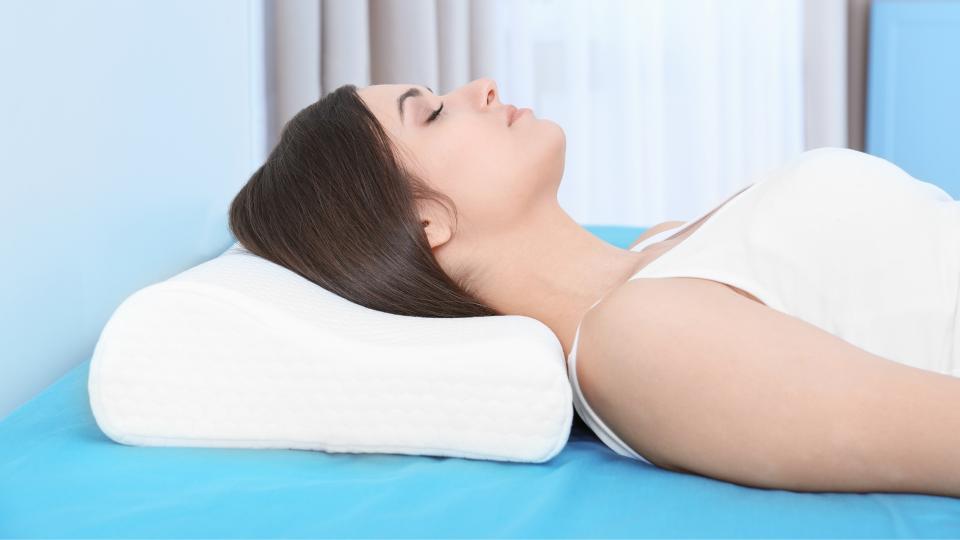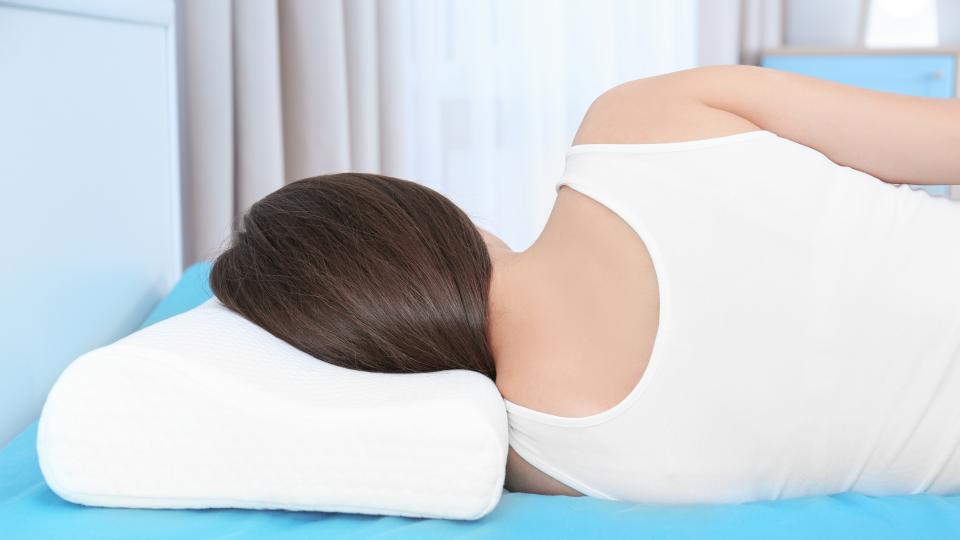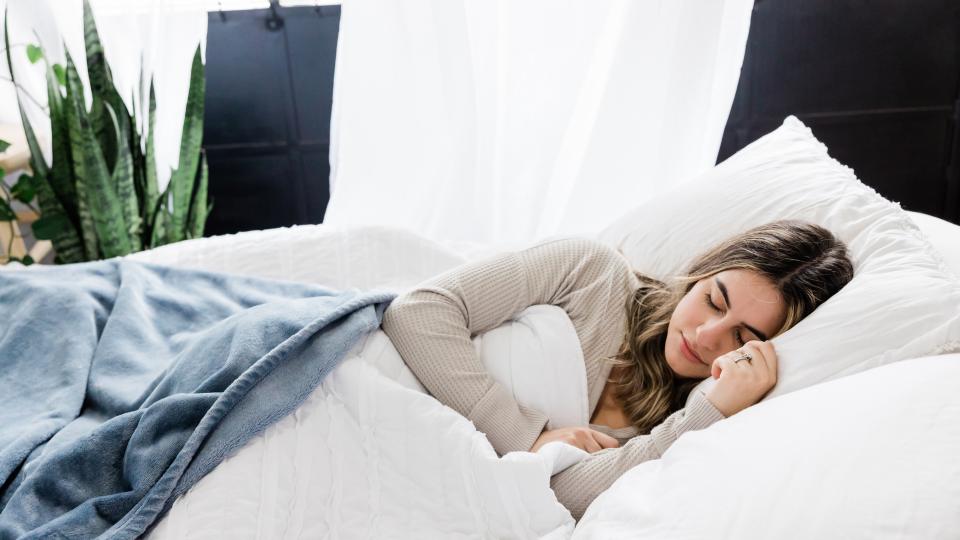Sleep is a natural and essential part of our lives. Quality sleep not only rejuvenates our bodies but also prepares our minds for the challenges of the day ahead. A major factor that governs the quality of our sleep is the position in which we choose to rest.
Finding the best sleep positions can lead to not just improved sleep quality, but also enhanced overall health and well-being.
Different sleep positions hold unique benefits and considerations. Some may help alleviate lower back pain while others can reduce snoring or offer relief from acid reflux. The best sleep positions are often personal, depending on individual needs and comfort.
This article will explore different types of sleep postures including back sleeping, side sleeping, and stomach sleeping. Each section will delve into the benefits and considerations associated with these positions, providing you with comprehensive knowledge to aid in finding your perfect sleep position.
Understanding these different postures better helps us make informed choices about how we rest at night, potentially improving not only our sleep but also our daily life.
1. Back Sleeping

Back sleeping is one of the best sleep positions for many people, but like all things, it’s not perfect for everyone. Lying on your back at night, with the body straight and the arms at the sides, is a natural posture that can provide numerous health benefits.
Benefits of Back Sleeping for Spine Alignment
Lying on your back allows your spine to rest in a neutral position. This means that there are no extra curves in the back, and it aligns well with your neck and head. This natural alignment helps to:
- Reduce pressure on discs
- Minimize potential for pain
- Promote a restful night’s sleep
The right mattress is key in this position; it should support the natural curve of your lower back while still being comfortable.
How Back Sleeping Can Alleviate Low-Back Pain
Many people find that back sleeping can lead to less low-back pain compared to other positions. When you lay flat, your weight is evenly distributed and spread across the widest surface of your body. As a result:
- There is less strain on pressure points
- Muscles can relax more completely
- Tension often decreases
Using a pillow under your knees can further reduce stress on your lower back by allowing the lumbar area to flatten out a bit more.
Considerations for Neck Pain When Back Sleeping
While back sleeping is great for spine alignment and can alleviate low-back pain, it may not be as beneficial if you have neck pain. To enjoy the benefits of back sleeping without aggravating neck issues:
- Choose a pillow that keeps your head in neutral alignment with your spine
- Avoid overly thick or stiff pillows that tilt your head upwards
- Consider using a rolled-up towel or special cervical pillow for additional neck support
By ensuring proper neck support while on your back, you minimize the risk of waking up with stiffness or discomfort in the neck area.
Remember, shifting to back sleeping might take time if you’re used to another position, and it’s essential to make sure you’re comfortable throughout the night. Your body will thank you for giving attention to these details and finding what works best for you.
2. Side Sleeping

Side sleeping is a common sleep position where you lie on either your left or right side with your legs stacked or slightly bent. This position can greatly affect your sleep quality and overall health.
Benefits of Side Sleeping for Snoring Reduction and Mild Apnea Relief
1. Reduces Snoring: When you sleep on your side, it helps keep your airways open, which reduces snoring. This is especially helpful for people who snore loudly or have mild obstructive sleep apnea, as these conditions often worsen when sleeping on the back.
2. Improves Breathing in Sleep Apnea Patients: For individuals with mild sleep apnea, side sleeping can prevent the tongue and soft tissues in the throat from collapsing, ensuring better airflow during sleep.
Advantages of Side Sleeping for Pregnant Women
1. Enhances Blood Flow: Expectant mothers are often advised to sleep on their sides, particularly the left side, to improve circulation to the heart. This increased blood flow benefits both mother and fetus.
2. Reduces Pressure on Liver: Side sleeping also prevents putting too much pressure on the liver, which is crucial during pregnancy.
Benefits for Those with Heartburn or Acid Reflux
Minimizes Acid Reflux Symptoms: People who experience heartburn or gastroesophageal reflux disease (GERD) may find significant relief by sleeping on their left side. This position can help reduce acid reflux by preventing stomach contents from flowing back into the esophagus.
Side Sleeping as a Solution for Nasal Congestion
Promotes Sinus Drainage: Side sleeping might ease nasal congestion by facilitating better drainage of sinus passages. Shifting to one side allows gravity to aid in clearing blocked nasal pathways.
It’s important to remember that while side sleeping has many health benefits, it’s crucial to maintain proper alignment:
- Use a firm pillow to support your head and neck.
- Position a pillow between your knees to keep your hips aligned and reduce stress on your lower back.
By maintaining the right posture while side sleeping, you can be more comfortable and minimize potential issues like shoulder pain or misalignment. It’s also important to consider personal preference when choosing the best sleep position for you.
3. Stomach Sleeping

Stomach sleeping is a sleep position where an individual lies flat on their abdomen, often with their head turned to one side on a pillow. While some find this position comfortable, it requires careful attention to maintain a healthy spine alignment.
Maintaining Healthy Spine Alignment
- Choose a Thin Pillow: To keep the neck as neutral as possible, opt for a thin or no pillow under the head.
- Place a Pillow Under the Pelvis: Adding a pillow under the lower abdomen can help reduce the strain on the back and maintain a more natural alignment of the spine.
- Stretch in the Morning: Gentle stretching can alleviate any stiffness caused by stomach sleeping. Focus on exercises that extend the spine and open up the chest.
Drawbacks of Stomach Sleeping
- Strain on the Neck: With the head turned to one side, there’s an unnatural twist in the cervical spine which can lead to neck pain.
- Lower Back Stress: The natural curve of the lumbar spine may flatten out when lying on your stomach, causing tension and discomfort in the lower back.
- Impaired Breathing: Pressure on the chest may make breathing less efficient during sleep.
Despite personal preferences for stomach sleeping, it’s vital for those choosing this position to consider these factors for their overall health. Modifications to this sleep position can help alleviate some of its negative impacts but finding a balance between comfort and support is key.
Sleep Positions for Specific Conditions

Sleep positions can be tailored to accommodate specific health conditions. Let’s delve into two vital considerations: sleep apnea and pregnancy.
Sleep Apnea
People with sleep apnea often struggle with disrupted sleep due to breathing difficulties. Side sleeping is commonly suggested as the best sleep position for those suffering from this condition. This position helps keep the airways open, reducing the chances of snoring and interrupted breathing during sleep.
Pregnancy
During pregnancy, finding a comfortable and safe sleep position becomes important not just for the mother’s rest, but also for the wellbeing of the baby. Left side sleeping is often recommended. This position can improve blood flow to the fetus and help reduce pressure on the liver. However, it’s crucial to note that each pregnancy is unique, and what works best may vary.
In both scenarios, adjusting to new best sleep positions might require patience and time. Remember that comfort should not be compromised; using additional pillows for support or investing in a pregnancy pillow can make the transition smoother.
In our journey to discover the best sleep positions, we’ve explored various perspectives – from back sleeping to stomach sleeping, and now addressing specific conditions. As we continue, let’s shift our focus onto another critical factor influencing sleep quality – your mattress and pillow.
The Importance of Mattress and Pillow Support

Selecting the right mattress and pillow support based on your sleep position is essential for getting a good night’s sleep. Here’s what you need to know:
Choosing the Right Mattress Support
When it comes to mattresses, here’s what you should consider based on your sleep position:
For Back Sleepers
Back sleepers need a mattress that provides firm support to keep their spine aligned naturally. Memory foam or latex mattresses are often recommended as they conform to the body while offering adequate support.
For Side Sleepers
Side sleepers benefit from a medium-firm mattress that cushions their shoulders and hips while providing support to the waist. This helps maintain proper spinal alignment and relieves pressure points.
For Stomach Sleepers
Stomach sleepers should opt for a firmer mattress surface to prevent their midsection from sinking too much, which could strain the spine.
Choosing the Right Pillow Support
In addition to mattress support, pillow support is equally important. Here’s what you should look for based on your sleep position:
For Side Sleepers
Side sleepers should choose a pillow that fills the space between their neck and the mattress without tilting their head up or down. This helps keep their spine straight from the neck to the lower back.
For Back Sleepers
Back sleepers should use thinner pillows to avoid pushing their head too far forward. Some may prefer a pillow with extra padding under the neck for added support.
For Stomach Sleepers
Stomach sleepers typically need a very thin, almost flat pillow to maintain proper alignment of their neck and spine.
Why Mattress and Pillow Support Matters
Maintaining spinal alignment with the right mattress and pillow support can have a significant impact on your sleep quality and overall physical health. Whether you prefer traditional spring mattresses or are considering newer options like memory foam or hybrid mattresses, here’s what you should keep in mind:
- Personal comfort and preference should be your top priority when choosing a mattress or pillow.
- Look for products that provide adequate support for your sleep position.
- Consider factors like material quality, durability, and breathability to ensure a comfortable sleeping environment.
- If you tend to change positions during the night, a medium-firm mattress might offer the best balance of comfort and support.
Investing time and effort into finding the right mattress and pillow tailored to your specific needs is an investment in your well-being. It can lead to better sleep quality, reduced discomfort, and improved overall health.
Overcoming Challenges in Adjusting to New Sleep Positions

Changing sleep positions can feel uncomfortable at first, especially if you’re dealing with neck or back pain. Here are some strategies and tips to help you adjust smoothly and improve your health outcomes.
Strategies to Overcome Neck and Back Pain
- Use the right pillow: A good pillow can make a world of difference. For example, when back sleeping, opt for a thin pillow to prevent your neck from being thrown too far forward.
- Gradual adjustment: Don’t rush things. Begin by spending a few minutes in the new position each night. Gradually increase this time as comfort levels rise.
- Supportive props: Consider using additional pillows or props for support. If you’re transitioning to side sleeping, placing a pillow between your knees can align your hips and alleviate strain on your lower back.
Tips for Gradually Changing Sleep Positions
- Patience is key: Remember, it takes time for your body to adjust to a new position. Be patient with yourself and don’t expect overnight change.
- Consistency: Make sure to maintain the same sleep position throughout the night. This helps train your body and become accustomed to the new position.
- Practice makes perfect: Practice the new sleep position during waking hours, like while reading or watching TV.
Remember that everyone’s body reacts differently, so what works best for others might not work best for you. It’s always wise to consult a healthcare professional before making significant changes to your sleep habits.
Creating a Comfortable Sleep Environment

In the search for the best sleep positions, we often forget about one important thing – where we actually sleep. Whether you prefer snoozing on your back, side, or stomach, having a space that promotes good sleep is crucial.
Why Your Sleep Environment Matters
Having a comfortable sleep environment is key to getting quality rest, no matter which position you choose. Here’s why it matters:
- Relaxation: When your bedroom feels cozy and inviting, it’s easier to wind down and relax before bed.
- Uninterrupted Sleep: A sleep-friendly environment reduces disturbances and helps you stay asleep throughout the night.
- Optimal Temperature: The right temperature can make or break your sleep experience. A cool room (around 65°F or 18°C) typically works best.
- Noise Control: Excessive noise can be disruptive, making it harder to fall asleep and stay asleep. Consider using earplugs or a white noise machine if needed.
- Light Management: Darkness signals your body to produce melatonin, the hormone that regulates sleep. Blackout curtains or an eye mask can help block out unwanted light.
How to Create a Sleep-Friendly Bedroom
Ready to transform your bedroom into a sleep sanctuary? Here are some tips:
- Declutter: A tidy space promotes relaxation and reduces distractions.
- Choose Soothing Colors: Opt for calm, soothing colors like blues and greens to create a peaceful atmosphere.
- Invest in a Good Mattress: Your mattress plays a huge role in your comfort level while sleeping. Choose one that provides adequate support for your preferred sleep position.
- Find the Right Pillow: Like mattresses, pillows should also be chosen based on your sleeping style to keep your neck and spine aligned.
- Block Out Noise and Light: If you live in a noisy area or have streetlights outside your window, consider using earplugs, a white noise machine, blackout curtains, or an eye mask.
- Control the Temperature: Keep your bedroom cool and well-ventilated. You can use a fan or adjust your thermostat as needed.
Remember, back sleeping offers various health perks like better spinal alignment, reduced wrinkles, and lower risk of acid reflux. But here’s the thing – even with all these benefits, without a comfortable sleep environment, achieving quality sleep can still be tough.
The Perfect Match: Sleep Positions + Comfortable Environment
Choosing the right sleep position is important for overall well-being – from improving blood flow and digestion to ensuring proper rest. When combined with a sleep-friendly setting, it’s the recipe for waking up feeling refreshed and ready to take on the day!
“Just as picking the right sleep position matters for your health and happiness, creating an ideal environment for sleep is equally essential. A cozy bedroom will complement your favorite sleep positions and ensure you make the most of your shut-eye time.”
FAQ
Q: What are the best sleep positions for reducing snoring?
Side sleeping is particularly effective in reducing snoring. This position prevents the tongue from collapsing into the throat, which can block the airway.
Q: Is it bad to sleep on my stomach?
Stomach sleeping can lead to neck and back pain due to poor alignment of the spine. If you prefer this position, using a flat pillow or no pillow can help maintain better alignment.
Q: Can changing my sleep position help with back pain?
Yes, back sleeping with proper support under your knees can alleviate low-back pain by maintaining natural spine curvature. Side sleeping with a pillow between your knees may also offer relief.
Q: How do I choose the right pillow for side sleeping?
The best pillow for side sleeping matches the distance between your neck and shoulder, ensuring your head and neck are aligned with your spine.
Q: Why is sleeping on the left side recommended during pregnancy?
Left-side sleeping improves circulation to the heart and allows for better blood flow to the fetus, uterus, and kidneys. It’s especially beneficial for pregnant women and those with acid reflux.
Q: Should I consult a professional if I have trouble finding a comfortable sleep position?
If you struggle to find a comfortable sleep position or have specific health concerns, consulting a sleep specialist or healthcare provider is wise. They can offer personalized advice tailored to your needs.



